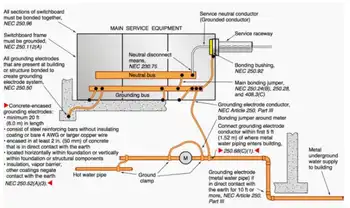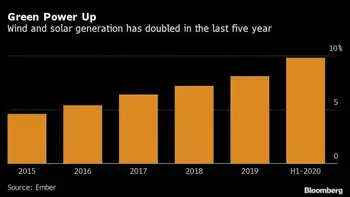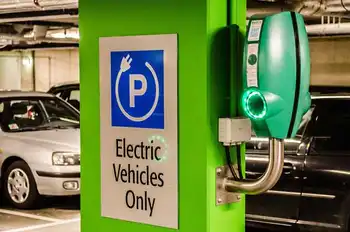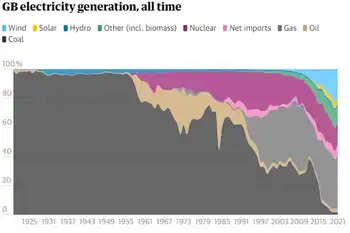Hope is blowing in the wind for British Columbia
By Vancouver Sun
NFPA 70b Training - Electrical Maintenance
Our customized live online or in‑person group training can be delivered to your staff at your location.

- Live Online
- 12 hours Instructor-led
- Group Training Available
The most striking thing about the new wind farm is how utterly normal it all seems. Looking out over Mike's Steak House to the ridge in the distance, the wind park is simply a quiet symbol of hope in a world addicted to fossil fuels.
I also couldn't help but think: frankly it's about time. Given all the chatter about B.C.'s climate leadership, you would think wind turbines and solar panels would be as common as in Germany.
We're often lulled into thinking we're "green" because of the big hydro dams built by previous generations. But three-quarters of the energy used in B.C. — to move us around, heat our homes and run our economy — still comes from fossil fuels. And whether B.C. will catch up to our neighbours is now in question since the regulators, government and BC Hydro are tangled in a quasi-judicial conflict at the BC Utilities Commission. Will future clean energy projects get bogged down in a swamp of legal-sized paper?
We really can't allow that to happen. With record temperatures and fires raging, British Columbians are seeing the dangers of a hotter planet first hand. The blanket of heat trapping gases already in the atmosphere means we've only seen the beginning. It is imperative that we do our part to eliminate fossil fuels as quickly as possible.
We are among the luckiest people on the planet and B.C. has enviable advantages. With the base load power from the big hydro dams backing up a modern renewable grid, B.C. can build a model for a fossil fuel-free world. It will take aggressive action by government, the private sector and all British Columbians to promote efficiency, clean energy and switch off fossil fuels by deploying technologies like electric transit and vehicles.
Similarly, our federal representatives need pressure. Canada has become known as one of the "bad boys" of international climate negotiations and Ottawa is allowing incentives for renewable power to run dry. The next climate negotiations are coming up this December in Copenhagen.
A clean energy economy is within our grasp, but it needs focus. The Obama administration is outspending Canada 14-1 (per capita) in its green jobs surge towards a new energy economy. The Europeans are out ahead. And now China, South Korea and other Asian nations have joined the clean energy race in a massive way.
It's not as widely known as it should be that B.C. has some of the most innovative and promising clean-tech companies in the world. We can make massive cuts in our energy consumption. We can green buildings and urban planning. We can take our homes and factories and transportation off fossil fuels. There is reason for hope but no time to waste.
And we have our own contradictions to deal with. Ramping up fossil fuel production in the North is a huge source of carbon emissions. We are still mining and exporting coal. And we should not even be considering pipelines from the tar sands to tanker ports on our west coast.
Instead we can focus on using energy much more wisely. I know this sounds dull but it is hugely important and the gains are impossible without public acceptance of conservation policies — through voluntary programs, sure, but we also need to support changes to our cities, more dynamic pricing and harnessing the potential of a "smart" grid. And legislation like Japan's "top-runner" law, where the most inefficient products are regularly removed from the market, driving companies to be ever more efficient.
The transition off fossil fuels also requires effort and acceptance from all of us. We can match legislation like Ontario's new Green Energy Act to spur clean energy development. We can demand that our governments impose ever-stricter caps on carbon pollution as well as constantly stricter mandates on buildings and vehicles.
Did you know that China has stricter vehicle standards than the new ones proposed for Canada? Or that Warren Buffet is betting his fortune on electric cars made in China? Clearly we can raise our game.
British Columbians can be justifiably proud that our province broke the Canadian logjam of inaction on global warming and clean energy. But we shouldn't underestimate the scale of the challenge ahead. It is time for a renewed leadership effort.











